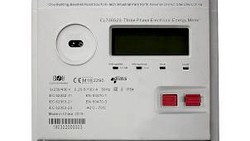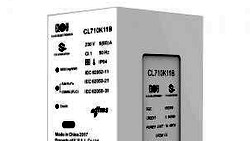The meter constant is an important parameter in energy metering, providing a quantified relationship between energy consumption and the meter's output. However, the expressions used to denote meter constant can sometimes be confusing. In this article, we shall explore various expressions, including imp/kWh, kWh/imp, revolutions per kilowatt-hour, and the supplementary expression employed in ANSI meters. Additionally, we will explore the calibration requirements of meter constants and the significance of reactive energy measurement.
Imp/kWh and kWh/imp
The expressions imp/kWh and kWh/imp are commonly used in energy meters with pulse outputs. Imp/kWh represents the number of impulses or pulses generated by the meter for each kilowatt-hour of energy consumed. On the other hand, kWh/imp represents the inverse, denoting the number of kilowatt-hours per impulse. These expressions are crucial for accurately translating the meter's output into meaningful energy consumption data.
Additional Pulse Output for Reactive Energy
In some cases, meters may include an additional pulse output specifically for reactive energy measurement. This allows for separate monitoring and billing of reactive power, providing insights into power factor optimization. Meters with an imp/kvar pulse output enable businesses and utilities to track and analyse reactive power consumption, facilitating efficient energy management. Calibration of the imp/kvar pulse output ensures accurate measurement of reactive energy alongside active energy.
Revolutions per Kilowatt-hour
Ferraris meters, which utilize a rotating disc to measure energy consumption, express their meter constant in terms of revolutions per kilowatt-hour. Each revolution of the disc corresponds to a certain amount of energy consumed. Proper calibration of the meter constant ensures that the revolutions are accurately translated into kilowatt-hour measurements. Calibration involves here also adjusting the meter's internal mechanisms, such as the tension of the disc spring, to maintain precision over time.
If you're curious about the distinction between adjustment and calibration in the context of energy metering, we've got you covered! Follow the link to dive deeper into this topic.
Exploring the ANSI Meters
In addition to imp/kWh and kWh/imp, ANSI meters use a different expression for meter constant. This type of meter, widely used in various regions, employs the term Kh.
Kh represents the number of kilowatt-hours per pulse or revolution, similar to kWh/imp. Proper calibration of the Kh value is essential to ensure accurate energy measurement. Calibration involves verifying the accuracy of the meter's pulse output and adjusting the internal Kh value as necessary.
Conversion from Kh to imp/kWh
Converting from Kh to imp/kWh is a straightforward process that allows for easy comparison and compatibility between different metering systems. To convert from Kh to imp/kWh, you can use the following formula:
Conversion Factor (imp/kWh) = 1000 / Kh
By dividing 1000 by the Kh value, you obtain the conversion factor in imp/kWh. This factor represents the number of impulses or pulses generated per kilowatt-hour of energy consumed.
Example:
Let's consider an ANSI meter with a Kh value of 7.2. To convert this value to imp/kWh, we can use the formula: Conversion Factor (imp/kWh) = 1000 / 7.2 = 138.89 imp/kWh
Therefore, for every kilowatt-hour of energy consumed, this meter will generate approximately 138.89 impulses or pulses.
Conclusion
Understanding the various expressions of meter constants, including imp/kWh, kWh/imp, revolutions per kilowatt-hour, and the ANSI meter's Kh, is crucial for professionals in the energy metering industry. Proper calibration of meter constants is essential to maintain accuracy and reliability. Additionally, the inclusion of pulse outputs for reactive energy measurement enhances power factor optimization and efficient energy management.
If you have any inquiries or need further information about ensuring energy meter accuracy through precise testing or if you're looking for advanced test equipment for both laboratory and on-site tests, please don't hesitate to reach out to us. Our team of experts is here to provide you with the solutions and knowledge you need. We are here to assist you and welcome your valuable thoughts and comments.
Editor's note: This article was originally published in October 2023 and has been updated for comprehensiveness.





All comments are moderated before being published. Inappropriate or off-topic comments may not be approved.